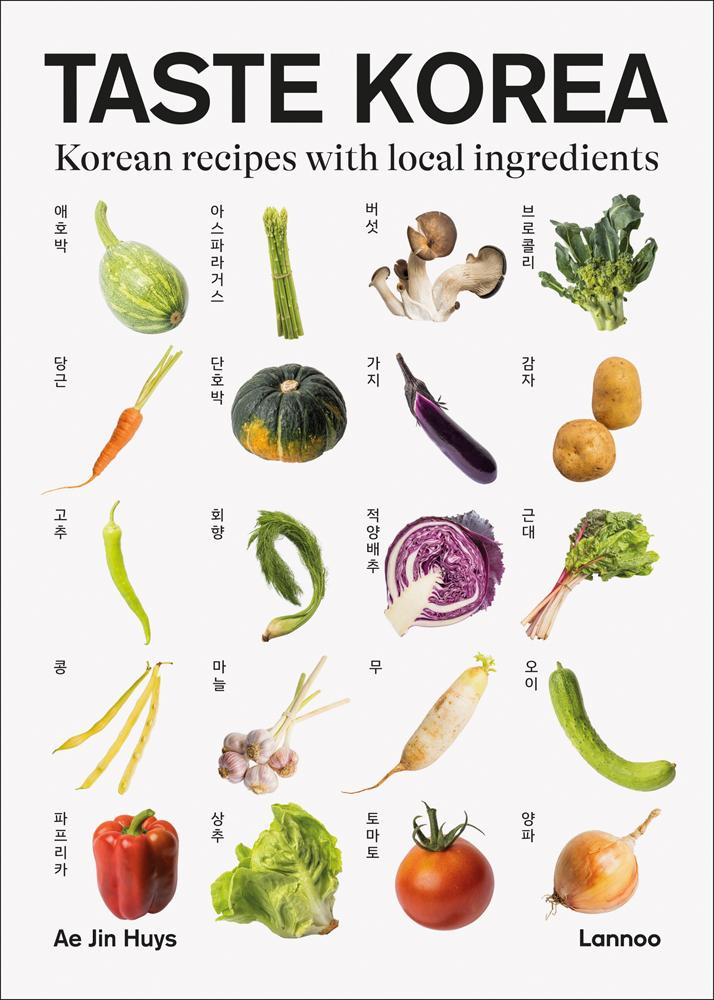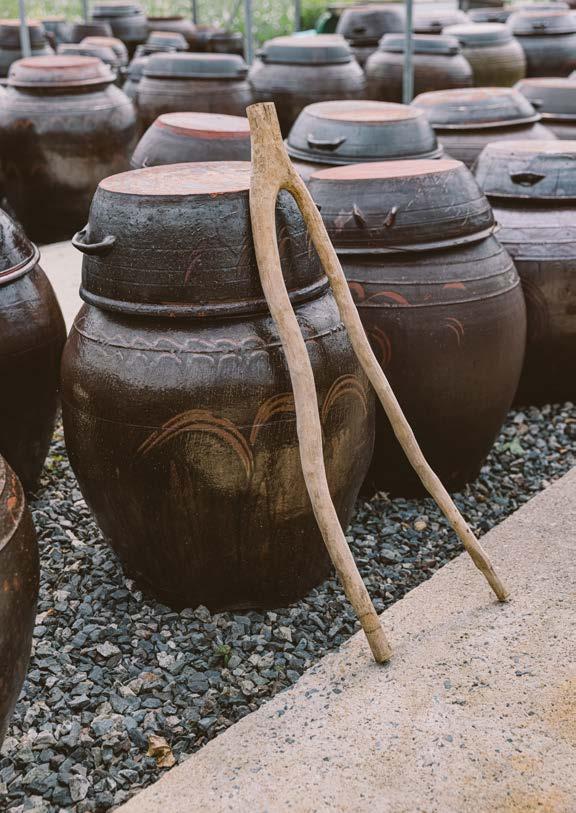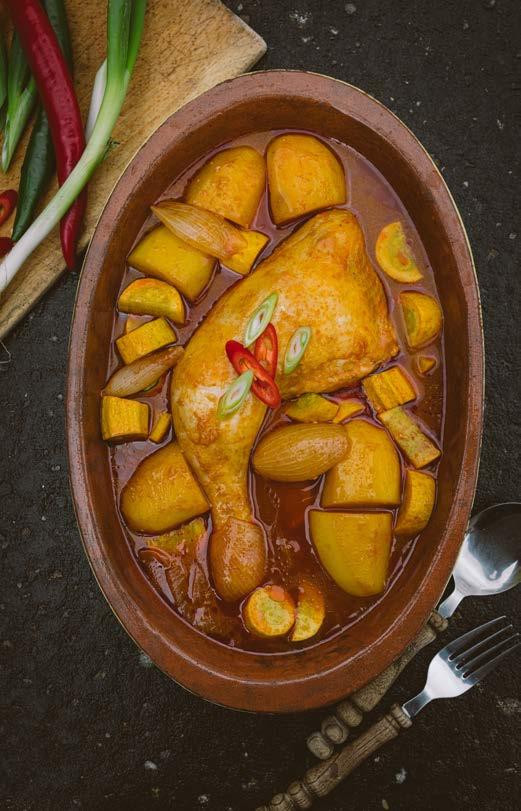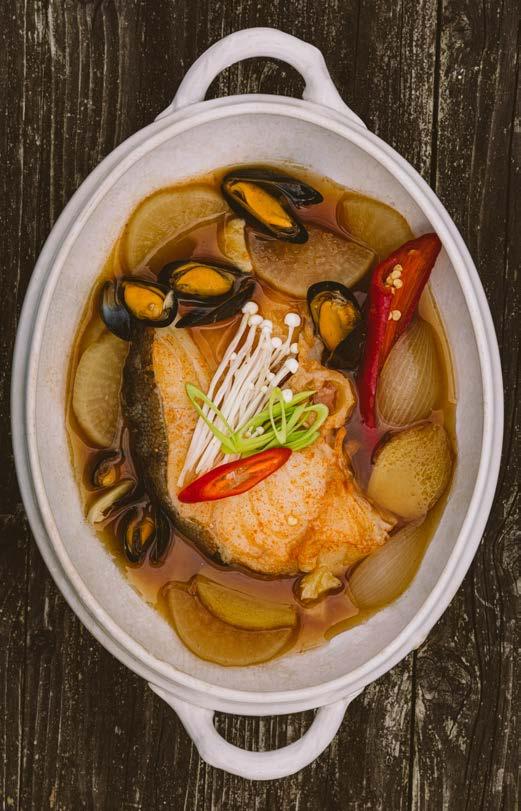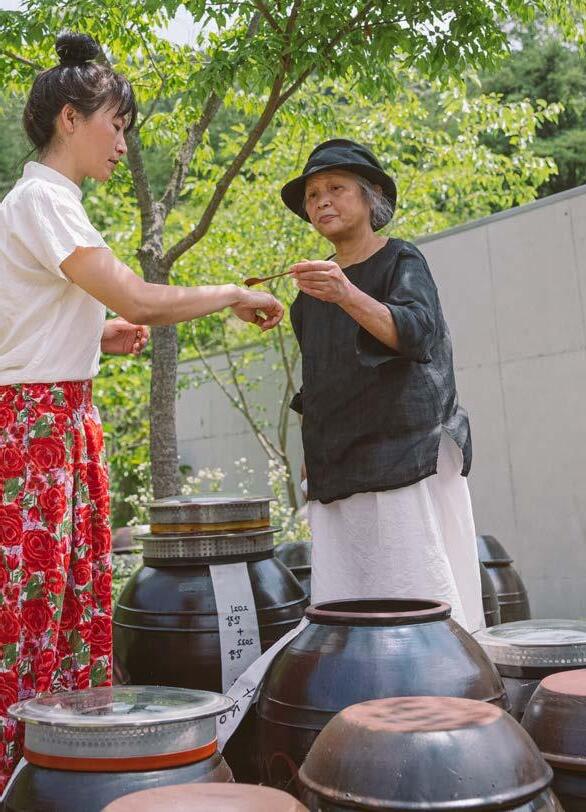The words yang-nyeom, meaning ‘seasoning’ in Korean, originated from two words: yak, which means medicine, and nyeom, which means thinking or thought. As its etymology indicates, yang-nyeom was once used as a medicine, and today it is used to improve the flavour of food. A cook must fully put heart and mind into the food preparation, using fresh seasonal ingredients and yang-nyeom to create a dish that is more than a meal, but also a natural medicine for body and soul. “One must reflect on which ingredients are used, where they are from, how they are prepared and by whom, and how they will affect the body. Eating according to what the body needs, rather than what the palate desires, is essential.”
– Wook Wan Seunim
찹쌀
CHAPSSAL
glutinous rice
Chapssal, or glutinous rice, is different from maepssal, the type of rice typically served at the table. Chapssal and chapssalgaru (glutinous rice flour) are both processed into distinct types of jang. When glutinous rice flour is not available, flour from wheat, barley, and millet are acceptable substitutes.
장독
JANGDOK
earthen jar
Jangdok are large earthenware jars for storing fermented foods. Food storage in ceramic pots is said to date back to prehistoric times in Korea. These pots were found wherever Koreans lived, regardless of region or class. Pottery was cheap and the microporous structure of the material made it especially suitable for fermentation. Over time, the golden age of potters became superseded by industrialization, and today only a handful of Korean potters are masters of the original craft. 옹 ong means ‘pottery’; earthenware pots are also called 옹기 onggi. Smaller jars are 항아리 hangari and 단지 danji.
장독대
JANGDOKDAE
terrace for jangdok
The word jangdokdae is derived from jangdok which means ‘jar’, while dae denotes ‘a place’. Jangdok are generally grouped together and stored outside on a terrace of some sort, jangdokdae. Today, jangdok can still be seen alongside most houses in the Korean countryside. 옹기종기 Onggi jongi is the term for a warm sense of togetherness and refers to the various onggi standing together.
SPICY CHICKEN STEW
INGREDIENTS
400g chicken thighs
500ml water
2 to 3 potatoes (200 g)
½ carrot (optional)
1 onion
¼ leek
SAUCE
2 tablespoons chilli paste
2 to 3 cloves of garlic, crushed
2 tablespoons rice syrup (see p. 24)
4 tablespoons soy sauce
1 slice of ginger
1 Spanish red chilli
pepper (optional)
PREPARATION
Blanch the chicken thighs in boiling water until the meat turns opaque. Rinse with cold water and drain. Peel the potatoes and onion and scrape the carrot clean. Cut the vegetables into pieces of roughly equal size. Thoroughly mix all the ingredients for the sauce together. Bring everything (except the leek) to the boil on medium heat. Once the water boils, lower the heat and put on the lid. Check and stir at regular intervals. Skim off the surface fat and check frequently if the meat is cooked by inserting a skewer. Slice the leek into small rounds and add to the dish just before serving.
“To know the taste in that house, just have a look at their jangdok (see p. 27). If it is clean and orderly, the taste of their jang will also be good.” “A tasty jang makes a tasty meal.” And: “Pickles that you can eat all year round are a real treat.” My mother entrusted me with these valuable lessons as if she foresaw the future — her third daughter's calling to pass on all jang knowledge to the world. After a past of poverty where food was very precious, she preserved these flavours for her family with carefully prepared jang.
–
Yun Wang Soon
SPICY FISH SOUP
INGREDIENTS
100g daikon
¼ onion
3 slices of ginger
1 spring onion
5g kelp
250g cod (1 fillet)
½ Spanish red chilli pepper (optional)
10 shellfish of your choice, cleaned (optional)
SAUCE
1 tablespoon soybean paste
1 tablespoon chilli paste
1 tablespoon soy sauce
1 tablespoon fish sauce
2 cloves of garlic, crushed
300ml water
PREPARATION
Mix the ingredients for the sauce. Peel the daikon and cut into 1cm crescents. Roughly chop the onion and place in the bottom of your pot together with the daikon, ginger, spring onion, and kelp. Put the cod on top and add the sauce. Simmer gently until everything is cooked. At the end, add the shellfish to the soup and cook briefly until they open.
KALE PANCAKE WITH FERMENTED SAUCE RECIPES
INGREDIENTS
50g kale (3 leaves) vegetable oil, to fry
BATTER
50g wheat flour
50g corn or potato starch
1 tablespoon soybean paste
1 teaspoon chilli paste
100ml water
½ onion, finely chopped
½ Spanish red chilli pepper, finely chopped
PREPARATION
Peel off the cabbage leaves. Make the batter by mixing the batter ingredients, then add the shredded leaves. Heat some vegetable oil in a pan and fry one large or several small pancakes until crispy on both sides.
GOOD TO KNOW
You can replace the kale with another vegetable or a mixture. The characteristic taste of this dish stems from the jang (see p. 22). For a more Western variant, jangtteok is also delicious as a vegetable burger with some homemade mayonnaise.
ACKNOWLEDGMENTS
❍ Frederik Sioen for your love, support, and enthusiasm.
❍ Go Young Joo for your friendship, hospitability, warmth, and wisdom.
❍ Kim Zin Ho & Jang Bo Hyun, Mathieu Cieters & Lore Snauwaert for the elegant aesthetics.
❍ Selma Franssen, Doortje Callaert, Alan Anderson and Nikki Legon for elevating my words to a higher level.
❍ Yun Yeongseop for building bridges between languages.
❍ Yun Wang Soon & Kim Jin Ha, Moon Sung Hee, Kim Sol & Byeon Jong Hyun, Chung Chung Kee, Yu Mi Young & Kim Ji Hyun, Kim Eun Young, Kim Do Yun, Jeong Yeon Tae, Wook Wan Seunim, for your hospitability, enthusiasm, and inspiration.
❍ Caroline Kesteleyn for the beautiful ceramics.
❍ Julian Quintart, for the connections.
WITH THE SUPPORT OF
❍ Het Vlaams Instituut voor Biotechnologie , with special thanks to Sofie Bekaert for facilitating this collaboration.
❍ De Vroente, which combines the experience and youthful energy of three farms: De Kollebloem, Ourobouros, and De Zonnekouter. Together, they cultivate biodynamic quality vegetables and fruit. With character, fresh, and straight from the field. Thank you for the vegetables.
